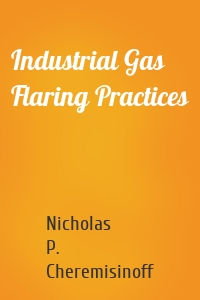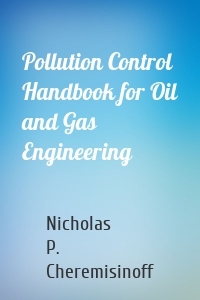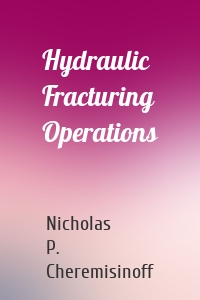Nicholas P. Cheremisinoff
5 кн.
Perfluorinated Chemicals (PFCs)
This new volume provides a timely study on the environmental challenges from a specific class of perfluorinated chemical compounds (PFCs) that are now being recognized as a worldwide health threat. Recent studies report that levels of classes of PFCs known as polyfluoroalkyl and perfluoroalkyl (PFASs) exceed federally recommended safety levels in public drinking-water supplies for 6 million people in the United States and that as many as 100 million people could be at risk from exposure to these...
| Автор | Nicholas P. Cheremisinoff |
Industrial Gas Flaring Practices
This volume tackles for the first time in decades the world's gas flaring practices, a difficult, hot-button issue of our time, whose consequences are only just beginning to be understood. The book examines both the technical and environmental aspects of gas flaring, highlights different flare designs, and presents real-world case studies illustrating the proper use of gas flaring and how to avoid polluting flaring events. The only guide of its kind, this remarkable book can help professionals...
| Автор | Nicholas P. Cheremisinoff |
Groundwater Remediation
Groundwater is one of the Earth’s most precious resources. We use it for drinking, bathing, and many other purposes. Without clean water, humans would cease to exist. Unfortunately, because of ignorance or lack of caring, groundwater is often contaminated through industrialization, industry, construction or any number of other ways. It is the job of the environmental engineer to remediate the contaminated groundwater and make what has been tainted safe again.Selecting the proper remediation...
| Автор | Nicholas P. Cheremisinoff |
Pollution Control Handbook for Oil...
This is a major new handbook that covers hundreds of subjects that cross numerous industry sectors; however, the handbook is heavily slanted to oil and gas environmental management, control and pollution prevention and energy efficient practices. Multi-media pollution technologies are covered : air, water, solid waste, energy. Students, technicians, practicing engineers, environmental engineers, environmental managers, chemical engineers, petroleum engineers, and environmental attorneys are all...
| Автор | Nicholas P. Cheremisinoff |
Hydraulic Fracturing Operations
Hydraulic fracturing, commonly referred to as “fracking,” is a technique used by the oil and gas industry to mine hydrocarbons trapped deep beneath the Earth’s surface. The principles underlying the technology are not new. Fracking was first applied at the commercial level in the United States as early as 1947, and over the decades it has been applied in various countries including Canada, the UK, and Russia. The author worked with engineering teams as early as the mid-1970s in evaluating ways...
| Автор | Nicholas P. Cheremisinoff |






